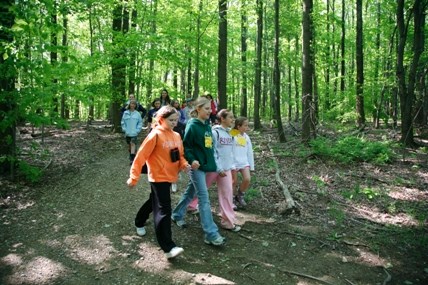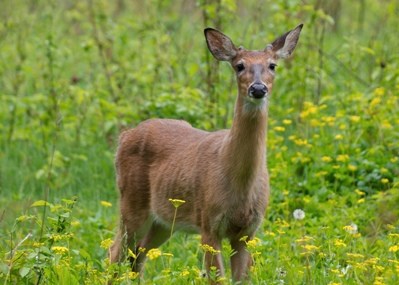
© Sara Guren Visiting a forest is always new and exciting—even if you’ve been there before. Who knows what creatures you’ll see or how it’s changed since your last hike there? Old trees die and fall, making new sunny spots where plants and young trees sprout up. Seasonal ChangesEven a few months can make a big difference in how a forest looks. A trail you know well in summer can be hard to recognize in winter. The forest ecosystem along the Oak Hill trail system is a mixed forest. It has both deciduous and evergreen trees. The forest’s tall oak, hickory, and beech trees are still bare in early spring. This gives wildflowers like spring beauty and mayapple time to peek up through the sun-soaked forest floor. By the time the tall trees have leafed out into a shady summer canopy, most of the woodland wildflowers are finished making seeds. Seasons also affect how an ecosystem works. 
© Jerry Jelinek Deer throughout the yearUnder the tall oaks and hickories are shorter understory trees like American hornbeam and sassafras. Like the other deciduous trees, they drop their fall-colored leaves as the days grow short. With the other trees leafless, the evergreens like pines and spruces really stand out—especially against a snow-covered background. |
Last updated: August 21, 2024
